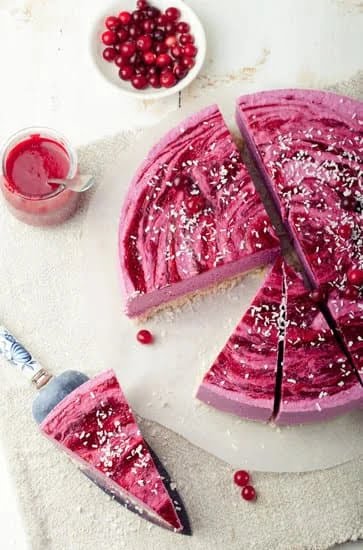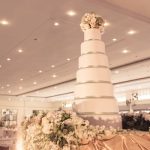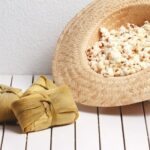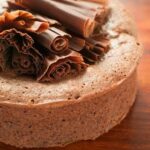Are you interested in learning how to practice cake decorating without waste? Whether you’re a professional baker or an amateur enthusiast, minimizing waste is not only good for the environment but also beneficial for your wallet. In this article, we will explore the importance of practicing cake decorating without waste and provide you with tips, techniques, and strategies to achieve this goal.
When it comes to cake decorating, it’s crucial to understand the impact of excess materials and ingredients on both the environment and your budget. Excessive use of fondant, icing, and other decorative elements not only leads to unnecessary waste but also results in additional expenses. By learning how to minimize waste in your cake decorating endeavors, you can reduce your environmental footprint and save money in the process.
Throughout this article, we will discuss various methods for reducing waste in cake decorating, from utilizing leftover ingredients creatively to choosing the right tools and equipment to minimize excess usage. Additionally, we will explore the importance of planning and preparation before beginning a decorating project and highlight the benefits of using reusable and eco-friendly alternatives in cake decorating.
Whether you’re a seasoned pro or just starting out, these insights will help you improve your skills while also being mindful of sustainability.
Tips for Minimizing Waste
Practicing cake decorating without waste is not only beneficial for the environment but also for your wallet. By minimizing excess materials and ingredients, you can become a more efficient and eco-friendly decorator. Here are some tips for techniques and strategies to reduce waste in cake decorating.
One effective way to minimize waste in cake decorating is to accurately measure ingredients before using them. By measuring precisely, you can avoid using more than necessary, which can lead to leftover materials that may end up being thrown away. Additionally, consider using reusable piping bags and tips instead of disposable ones to reduce plastic waste.
Another tip for minimizing waste is to plan your decorations ahead of time. By having a clear idea of what design you want to achieve, you can avoid making unnecessary decorations that may end up unused. Planning can also help you create a shopping list with only the necessary ingredients and materials, reducing the chance of overbuying.
It’s also important to choose the right tools and equipment for cake decorating to minimize waste. Investing in high-quality, durable tools can prevent the need for frequent replacements, reducing plastic and metal waste from discarded tools. Opt for multi-purpose tools whenever possible to minimize the number of items you need in your decorating kit.
| Tips for Minimizing Waste | Techniques and Strategies |
|---|---|
| Accurately measure ingredients | Avoid using more than necessary |
| Plan decorations ahead of time | Create a shopping list with only necessary items |
| Choose the right tools and equipment | Invest in high-quality durable tools and opt for multi-purpose options when possible |
Utilizing Leftover Ingredients
When it comes to cake decorating, one of the biggest challenges is dealing with leftover icing, fondant, and cake scraps. It can be frustrating to see these materials go to waste, but there are creative ways to use them up and minimize your impact on the environment. In this section, we will explore some innovative ideas for making the most out of your leftover ingredients.
Creating Cake Pops and Cake Balls
One of the best ways to use up cake scraps is by turning them into delicious cake pops or cake balls. Simply crumble up the leftover cake, mix it with some frosting or icing, form small balls or shapes, and then dip them in melted chocolate or candy coating. Not only does this prevent waste, but it also creates a fun and bite-sized treat that is perfect for parties or gatherings.
Making Flavored Frosting or Fondant
If you find yourself with extra icing or fondant after a decorating project, consider repurposing it into flavored varieties. For example, you can mix fruit purees or extracts into your buttercream frosting to create unique flavors like raspberry, lemon, or coconut. Similarly, you can knead in different extracts or spices into fondant to add a twist to its flavor profile. This not only reduces waste but also adds new dimensions to your baked goods.
Creative Decorative Elements
Leftover fondant can also be used to create decorative elements for future cakes. Try rolling it out and using cookie cutters to make shapes that can dry and harden for later use as accents on cakes or cupcakes. You can also mold leftover fondant into flowers, bows, or other intricate designs and store them for future projects. These decorative elements not only reduce waste but also save time when decorating future cakes.
By utilizing these creative methods for using up leftover ingredients in cake decorating projects, you can significantly reduce waste while creating unique and delicious treats at the same time. Whether it’s repurposing cake scraps into cake pops or finding new ways to flavor extra frosting and fondant, there are plenty of opportunities to practice sustainable cake decorating without sacrificing creativity or taste.
Planning and Preparation
Practicing cake decorating without waste begins with careful planning and preparation. By taking proactive steps before starting a decorating project, you can minimize the amount of materials and ingredients that go unused, ultimately reducing waste and saving money. Here are some key steps to consider:
- Create a detailed plan: Before diving into a cake decorating project, take the time to create a detailed plan that outlines the design, color scheme, and techniques you will use. This will help prevent over-purchasing of supplies and ensure that you only buy what you need.
- Measure accurately: When it comes to ingredients such as fondant or icing, it’s important to measure accurately to avoid excess leftovers. Use measuring tools and follow recipes closely to prevent unnecessary waste.
- Choose appropriate portion sizes: Consider the number of servings needed for your cake and choose an appropriate portion size to avoid baking too much or too little. This will help minimize leftover cake scraps that go unused.
Additionally, it’s essential to think about the tools and equipment you will need for your project in advance. By having the right tools on hand, you can work more efficiently and reduce the risk of making mistakes that lead to waste.
- Assess your inventory: Take stock of your existing decorating materials and ingredients before making any purchases. You may already have items on hand that can be used for your project, eliminating the need for unnecessary buying.
- Invest in multi-purpose tools: Look for tools and equipment that serve multiple functions, such as versatile piping tips or adjustable cake pans. This can help reduce the number of items needed in your collection.
- Consider reusable alternatives: Instead of disposable decorating bags and plastic wrapping, invest in reusable options such as silicone piping bags and food wraps. These eco-friendly alternatives not only minimize waste but also contribute to sustainable practices.
By carefully considering your needs, measuring accurately, and choosing efficient tools, you can set yourself up for success in practicing cake decorating without waste. These proactive steps will not only benefit the environment but also streamline your creative process and improve your overall efficiency as a decorator.
Choosing the Right Tools and Equipment
When it comes to practicing cake decorating without waste, choosing the right tools and equipment is essential. By selecting the most efficient and practical tools, decorators can minimize the amount of materials and resources used, ultimately reducing waste. This not only benefits the environment but also helps decorators save money in the long run.
One important tip for minimizing waste when it comes to tools and equipment is to invest in high-quality, versatile items that can be used for multiple purposes. For example, instead of purchasing disposable piping bags, decorators can opt for reusable silicone ones that can be washed and used again. Additionally, investing in a good set of decorating tips and nozzles can eliminate the need for single-use options, further reducing waste.
Another way to choose the right tools and equipment for cake decorating without waste is by considering multi-functional items. For instance, a turntable can serve both as a rotating stand for easy icing application and as a display stand for showcasing finished cakes. This reduces the need for multiple specialized stands or tools, cutting down on unnecessary waste.
Finally, decorators can also explore eco-friendly alternatives when it comes to their tools and equipment. From sustainably sourced wooden spatulas to biodegradable parchment paper, there are numerous options available that are designed to minimize environmental impact. By making conscious choices about the tools they use, decorators can play a part in reducing waste in the industry while still creating beautiful cakes.
| Tool/Equipment | Waste-Minimizing Feature |
|---|---|
| Reusable silicone piping bags | Reduce reliance on disposable plastic bags |
| Versatile decorating tips and nozzles | Eliminate need for single-use options |
| Multifunctional turntable | Serves as both a rotating stand and display stand |
| Eco-friendly wooden spatulas |
Storage and Organization
When it comes to cake decorating, proper storage and organization are crucial in minimizing waste. By ensuring that your decorating materials are stored efficiently, you can prevent ingredients from spoiling and accessories from becoming damaged, ultimately reducing the amount of waste produced in your cake decorating process.
Here are some tips for storing and organizing decorating materials to minimize waste:
- Use airtight containers: Store leftover icing, fondant, and cake scraps in airtight containers to prevent them from drying out or spoiling. This will allow you to use these materials for future projects instead of throwing them away.
- Labeling: Properly label all storage containers to easily identify the contents and expiration dates. This will help you keep track of when ingredients were prepared or purchased, allowing you to use them before they expire.
- Invest in reusable piping bags and tips: Instead of using disposable piping bags and tips that contribute to waste, opt for reusable options that can be easily cleaned and used multiple times. This not only reduces waste but also saves you money in the long run.
By implementing these storage and organization techniques, you can effectively reduce waste in your cake decorating endeavors while keeping your materials fresh and ready for future projects. It’s all about being mindful of how to practice cake decorating without waste and making small changes that can have a big impact on sustainability.
Reusable and Eco-Friendly Alternatives
In today’s world, the importance of sustainability and eco-friendly practices cannot be overstated. This extends to every aspect of our lives, including cake decorating. As the demand for environmentally conscious practices grows, it is essential for cake decorators to explore reusable and eco-friendly alternatives to minimize environmental impact without compromising on creativity or quality.
Choosing Sustainable Ingredients and Materials
One of the first steps in practicing sustainable cake decorating is to carefully choose ingredients and materials that are eco-friendly. This includes opting for organic, locally sourced ingredients whenever possible, as well as selecting packaging made from recycled or biodegradable materials. Additionally, decorators can invest in reusable piping bags and silicone molds to reduce the reliance on single-use plastic products.
Exploring Natural Decorating Techniques
Another way to minimize environmental impact in cake decorating is to explore natural decorating techniques. Instead of relying solely on synthetic food coloring and artificial decorations, decorators can utilize natural dyes made from ingredients such as beetroot, turmeric, or spinach. Furthermore, incorporating fresh flowers, edible herbs, and fruits as decorative elements not only adds a unique touch to cakes but also reduces reliance on non-biodegradable decorations.
Upcycling and Repurposing Decorative Elements
Finally, practicing cake decorating without waste also involves finding innovative ways to upcycle and repurpose decorative elements. Leftover fondant can be transformed into cake toppers for future projects, while excess edible glitter can be used for other culinary creations. By thinking creatively and finding new uses for leftover materials, decorators can significantly reduce waste in their craft.
By embracing reusable and eco-friendly alternatives in cake decorating practices, decorators can contribute to a more sustainable industry while still creating stunningly beautiful confections that delight clients and consumers alike.
Case Studies and Success Stories
In conclusion, mastering the art of cake decorating without waste is not only beneficial for the environment but also for your budget and creativity. By implementing the tips and strategies provided in this article, you can significantly reduce your carbon footprint while elevating your skills as a cake decorator.
One of the most powerful takeaways from the case studies and success stories shared here is that practicing without waste requires a shift in mindset. It’s about being mindful of every ingredient, material, and tool used in the decorating process. From proper planning and preparation to utilizing leftover ingredients creatively, these successful cake decorators have shown how it’s possible to minimize waste without sacrificing quality or aesthetics.
Ultimately, learning how to practice cake decorating without waste is a continuous journey of improvement and innovation. By staying open to new techniques, tools, and eco-friendly alternatives, you can further enhance your sustainability practices while honing your craft as a skilled decorator. With dedication and creativity, you too can join the ranks of successful decorators who have mastered the art of minimizing waste in their cake decorating endeavors.
Frequently Asked Questions
What Can I Use to Practice Cake Decorating?
To practice cake decorating, you can use a variety of tools and materials such as piping bags, different tips for creating various designs, offset spatulas for smoothing frosting, and food coloring for adding color to your creations. It’s also helpful to have a turntable to easily rotate the cake while decorating.
What Can I Use Instead of Buttercream to Practice?
Instead of buttercream, you can practice cake decorating using other types of frostings such as ganache, cream cheese frosting, or whipped cream. Each has its own unique texture and flavor, providing an opportunity to work with different mediums and learn new techniques.
Can I Teach Myself to Decorate Cakes?
Yes, it is absolutely possible to teach yourself how to decorate cakes. With the help of online tutorials, books, and practice, anyone can develop their skills in cake decorating. Start by mastering basic techniques and then gradually challenge yourself with more complex designs as you gain confidence and experience.

Welcome to our cake decorating blog! My name is Destiny Flores, and I am the proud owner of a cake decorating business named Cake Karma. Our mission is to provide delicious, beautiful cakes for all occasions. We specialize in creating custom cakes that are tailored specifically to each customer’s individual needs and tastes.





